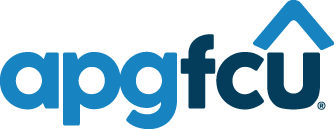 Does this scenario sound familiar? You’re hoping to buy a home, but your less-than-glowing credit history is discouraging lenders from giving you a loan and you’re worried that there’s no way out of this situation. But don’t give up hope because there is this solution: you can have a cosigner on a mortgage loan.
Does this scenario sound familiar? You’re hoping to buy a home, but your less-than-glowing credit history is discouraging lenders from giving you a loan and you’re worried that there’s no way out of this situation. But don’t give up hope because there is this solution: you can have a cosigner on a mortgage loan.
In this blog, we’ll walk you through the process of cosigning on a mortgage loan, the pros and cons for both the borrower and the cosigner, other important factors to consider when cosigning a mortgage loan, and alternative options if cosigning isn’t a good fit for you.
What Is a Cosigner?
A cosigner is a person who applies for the loan with you (the primary borrower) and agrees to assume the responsibility of making loan payments on your behalf if you cannot.
If you are asked to be a cosigner, you should understand that you’re signing a legally binding contract. Therefore if the primary borrower doesn’t make even just one loan payment, the legal obligation falls on you to do so. If the borrower misses several payments and defaults on the loan, you could become responsible for the entire value of the loan.
Therefore, before agreeing to be a cosigner, make sure the borrower can pay not only for the loan itself but also for insurance and any fees associated with the property. Similarly, before agreeing to cosign on a loan, review your finances and confirm that you can cover the extra loan payments in addition to your own mortgage and other financial obligations.
Who Needs a Cosigner?
A person with poor credit will often have difficulty getting approved for a home loan because the lender views their spotty history of paying back debts as an indicator that they might not pay back the loan.
However, if the borrower can find someone with a good credit history and a stable income to cosign the loan, the lender is more likely to approve it because the cosigner has mitigated much of the risk.
When Is a Cosigner a Good Idea?
Finding a cosigner is a good idea if you’re in any of these scenarios:
- You have a high debt-to-income ratio (DTI), which means you’re carrying a lot of debt compared to the income you have. When a cosigner’s income is added to yours, it lowers your DTI—which is more favorable to lenders.
- You’re self-employed, which indicates to lenders that you might not receive regular paychecks. However, if your cosigner has steady employment, this could help you qualify for the loan.
- You lack a credit score, which means there’s no history for a lender to assess your likelihood of paying back the loan. But, if your cosigner has a good credit score, this should work in your favor.
When Is a Cosigner Not Going to Make a Difference?
There are times when a cosigner actually might not make a difference in helping you obtain a home loan, particularly when it comes to meeting the lender’s qualifying credit score, which is the minimum score you must have to qualify for the loan.
Lenders look at the lowest score submitted between you and your cosigner. So even if your cosigner’s credit score is well above that number, if yours is below it, lenders might not approve your application.
Similarly, lenders use the lowest credit score on the application to determine the interest rate they will offer you. So if you’re hoping to get a lower interest rate by leveraging your cosigner’s stellar credit score, think again.
What the Cosigning Process Looks Like
When you apply for a home loan with a cosigner, the cosigner’s financial information is evaluated just as carefully and equally as yours is. The lender looks at the income, credit history, and debt-to-income (DTI) ratio for both of you.
They then offer a loan amount, interest rate, and length of the loan (the loan term). You agree to make a specific payment every month—which includes the principal, interest, and taxes—to pay back the debt.
When signing day arrives, both you and your cosigner sign the mortgage contract. By doing so, the cosigner is agreeing to make loan payments on your behalf and understands that they are legally responsible for paying back the debt if you cannot.
Information a Cosigner Needs to Provide
So what exactly does a cosigner need to provide during the loan application process? They need to submit all of the information they would give if they were applying for their own loan, such as:
- Financial records: This could include paystubs, tax returns, W2 forms, or other proof of income.
- Assets and debts: The lender might require information regarding investment portfolios, retirement accounts, or bank statements for savings and checking accounts.
- Credit history: A credit report and credit score will be required. Keep in mind that this “hard pull” could temporarily negatively impact the cosigner’s credit score.
- Proof of relationship: Sometimes lenders require proof of the cosigner’s relationship with the borrower. Oftentimes, lenders will only let close family members be cosigners on home loans because a non-relative might try to sell the property and displace the occupants.
The Pros and Cons of Cosigning
There are pros and cons when it comes to cosigning a home loan, so let’s break it down for both parties.
Pros for the Borrower
There are many pros for the borrower when a legitimate cosigner is in the mix because they can help you overcome negative aspects of your application such as:
- Bad credit: If you have bad credit, you’ll likely have trouble qualifying for a loan. But if your cosigner has excellent credit, lenders might decide to cut you some slack.
- Self-employment: If you’re self-employed, lenders could think your income stream is inconsistent. But if your cosigner has a steady, more traditional job, the lender might see that as a positive offset to your less predictable income flow.
- Lower income: If your income is on the lower side, lenders are more prone to offer you a smaller loan with a higher interest rate. But if you have a cosigner, the lender takes into account both incomes when determining what size loan they will offer, which means you could get a larger loan with a lower interest rate.
Cons for the Borrower
The only considerable negative for a borrower is that you’re asking a person who is close to you to assume financial responsibility for your home should you be unable to make payments. If that scenario happens, you might feel terrible about putting them in such a position.
Pros for the Cosigner
As a cosigner, you’re helping a family member or close friend realize the dream of home ownership with better terms and rates than they would have on their own—which can be very fulfilling.
Cons for the Cosigner
On the flip side, there are quite a few cons for a cosigner because this role comes with many risks, such as:
- Responsibility for payments: There’s an inherent risk in assuming a big financial responsibility that hinges on situations you cannot control—like the borrower losing their job or getting divorced. If they can’t make a monthly payment, it’s your responsibility to do so—even without any advance warning.
- Legal implications: Since you signed a legal contract, you’re on the hook legally to follow the conditions of the loan. So if the payments fall behind, the lender could sue you as well as the borrower for not honoring the contract.
- Hits to your credit: If the borrower misses even a single payment, your own credit will likely take a negative hit. You could then get bumped down to a less impressive credit tier which could in turn affect your ability to obtain your own car loan, mortgage loan, or new credit card.
- Inability to get out of the loan: If your relationship with the borrower falters, you cannot just walk away from your responsibility for the loan. The only way you could potentially get out of the loan would be to ask the borrower to refinance—without you being a cosigner.
How to Protect Yourself as a Cosigner
With so much financial responsibility and liability at stake, there are some steps you should take as a cosigner to protect yourself on a mortgage loan:
- Have the lender send you immediate notification if the primary borrower misses a payment.
- Create a separate savings account for two months of loan payments that you can easily access if you have to pay for a missed payment or two.
- Ask the borrower for the login credentials to their mortgage account so that you can monitor it online at any time.
- Only become a cosigner for a person you know very well, like a family member or lifelong friend, who has a track record of being responsible. It’s never a good idea to cosign on a loan for a person you hardly know.
How Much Bigger of a Loan Can I Get With a Cosigner?
This will vary by lender, but when lenders determine the size of the loan they’ll offer, they combine both your DTI and your cosigner’s DTI. Since your cosigner will have a good DTI, this will offset and lower your DTI, making your application more appealing to the lender. In turn, this could mean you get a larger loan amount or a better interest rate.
Cosigner vs. Co-Borrower—What’s the Difference?
A cosigner is a person who is willing to make loan payments on your behalf but doesn’t have any ownership of the home and doesn’t live in it. A co-borrower, such as a spouse, is a part-owner of the home and therefore has an ownership claim to the property, has their name on the title, and typically resides in the home.
How to Get a Loan Without a Cosigner
If you don’t have a close relative or friend who will cosign a loan with you, there are great alternatives through government-backed loans or home-buying assistance programs.
Government-Backed Loans
These are loan programs that are insured by the US federal government to help specific borrowers who might need financial assistance to buy a home, such as:
Federal Housing Administration (FHA) Loans: These loans help people who would otherwise not meet loan qualifications. FHA loans allow for a cosigner, but they must be a relative and reside in the United States.
Department of Veteran Affairs (VA) Loans: Available to borrowers with a direct connection to the military, VA loans have different eligibility requirements than conventional loans.
U.S. Department of Agriculture (USDA) Loans: USDA loans help borrowers with low-to-moderate incomes in specific rural areas to buy homes with no down payment.
Home-Buying Assistance Programs: On a more local level, state housing finance agencies (HFAs) provide financing to lower-to-moderate income borrowers so that they can realize the dream of home ownership.
What’s Next?
Now that you know the ins and outs of cosigning a mortgage loan, you can make an informed decision as to whether or not cosigning is a good option for you—whether you’re the borrower or the cosigner.
If you’re ready to move forward and apply for a mortgage loan, click on the button below to learn more about the mortgage process and the types of documents you’ll need for a quicker and smoother approval.

